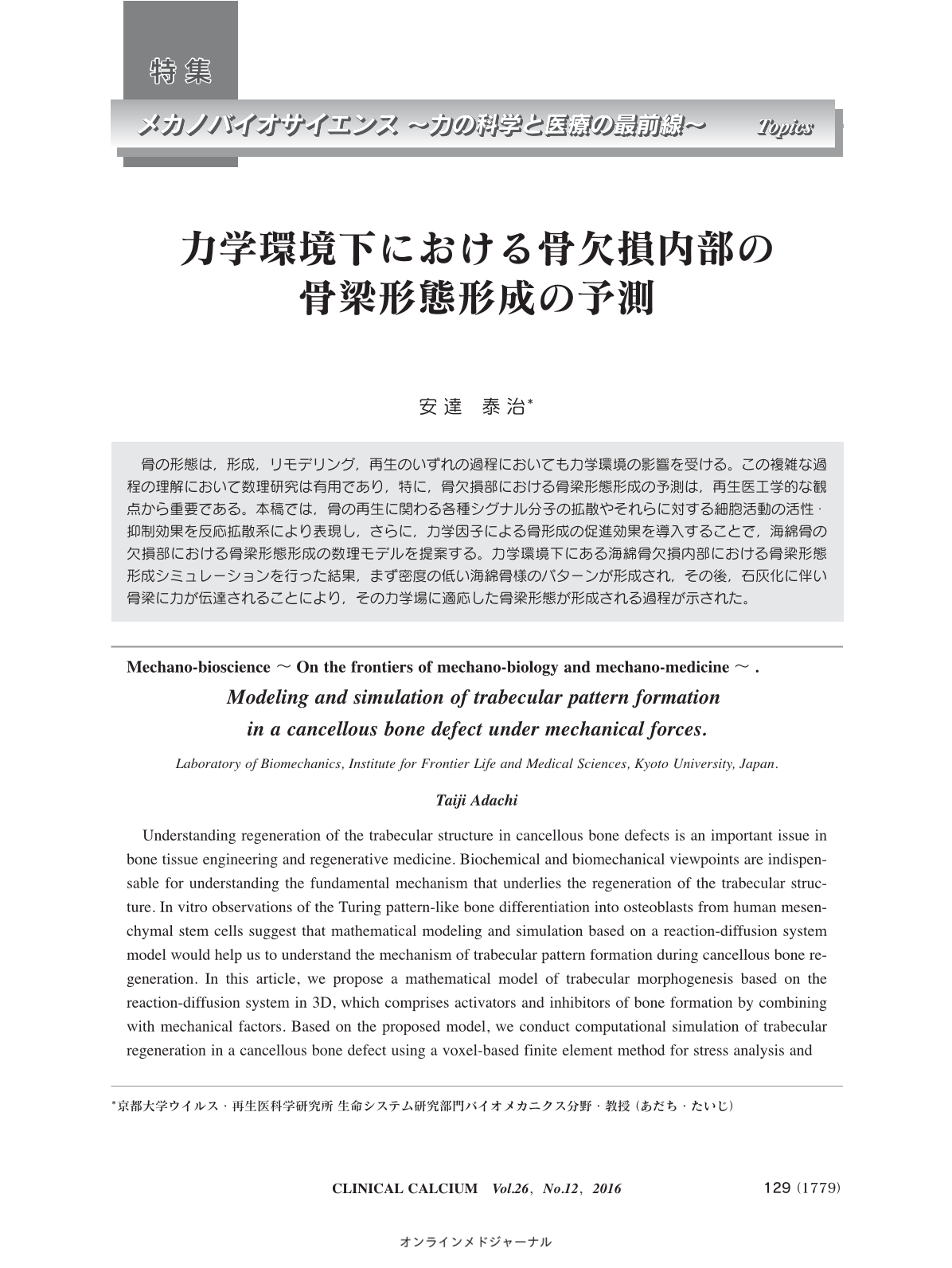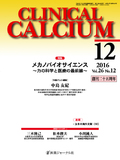Japanese
English
- 有料閲覧
- Abstract 文献概要
- 1ページ目 Look Inside
- 参考文献 Reference
骨の形態は,形成,リモデリング,再生のいずれの過程においても力学環境の影響を受ける。この複雑な過程の理解において数理研究は有用であり,特に,骨欠損部における骨梁形態形成の予測は,再生医工学的な観点から重要である。本稿では,骨の再生に関わる各種シグナル分子の拡散やそれらに対する細胞活動の活性・抑制効果を反応拡散系により表現し,さらに,力学因子による骨形成の促進効果を導入することで,海綿骨の欠損部における骨梁形態形成の数理モデルを提案する。力学環境下にある海綿骨欠損内部における骨梁形態形成シミュレーションを行った結果,まず密度の低い海綿骨様のパターンが形成され,その後,石灰化に伴い骨梁に力が伝達されることにより,その力学場に適応した骨梁形態が形成される過程が示された。
Understanding regeneration of the trabecular structure in cancellous bone defects is an important issue in bone tissue engineering and regenerative medicine. Biochemical and biomechanical viewpoints are indispensable for understanding the fundamental mechanism that underlies the regeneration of the trabecular structure. In vitro observations of the Turing pattern-like bone differentiation into osteoblasts from human mesenchymal stem cells suggest that mathematical modeling and simulation based on a reaction-diffusion system model would help us to understand the mechanism of trabecular pattern formation during cancellous bone regeneration. In this article, we propose a mathematical model of trabecular morphogenesis based on the reaction-diffusion system in 3D, which comprises activators and inhibitors of bone formation by combining with mechanical factors. Based on the proposed model, we conduct computational simulation of trabecular regeneration in a cancellous bone defect using a voxel-based finite element method for stress analysis and a finite difference method for reaction-diffusion analysis. The proposed model could express the regeneration of the three-dimensional trabecular structure with mechanically adapted functions as a load-bearing structure. Based on these results, the proposed model and simulation framework are expected to facilitate the analysis of regeneration of the cancellous bone;this will help us to examine bone regeneration that involve complex biological factors.



